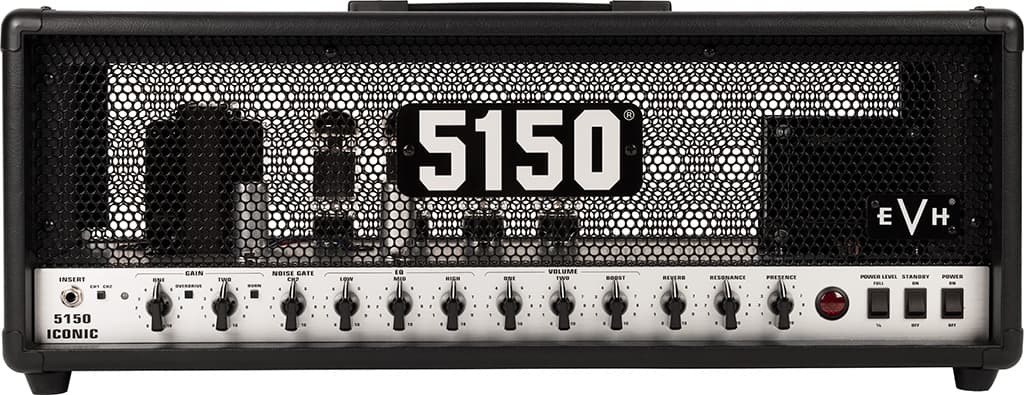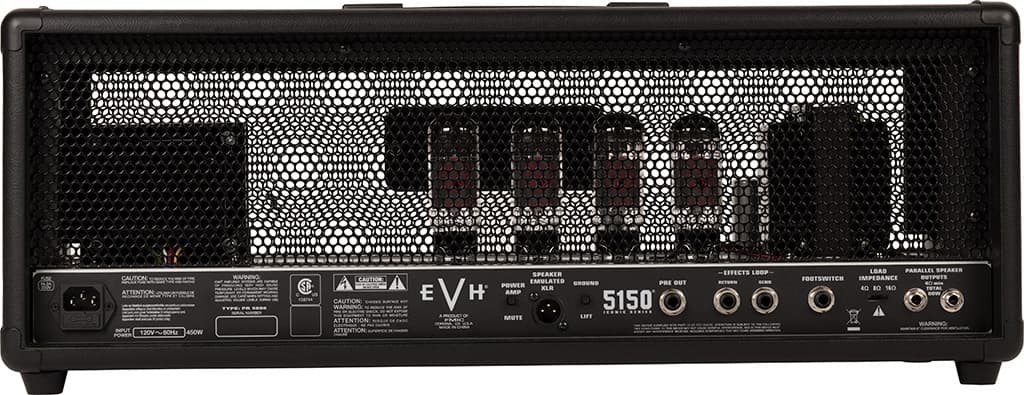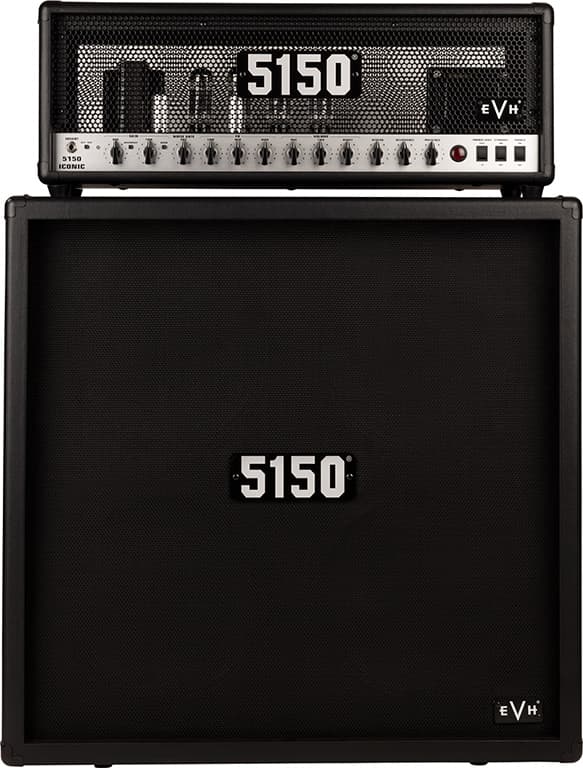
Review: EVH 5150 Iconic
A world of gain.
During the mid-1970s, proud new owner of a coveted 100W Marshall head Eddie Van Halen was looking for a way to manage its dominating volume. Shortly after this we see an early example of his frenetic, sideways-thinking explorations. Having seen an ad for a new Marshall head in a paper he wondered, ‘maybe this one will be different’, and immediately bought it.
It was different, but not at all how he’d envisaged. He’d unknowingly purchased an amp set for 220V, so initially the amp did nothing at all. Then slowly it warmed up and to his amazement it sounded incredible.
Wishing to harness this sound, his initial light-switch dimmer experiments yielded unsuccessful, and with explosive results. He was eventually directed towards the variable auto transformer, more commonly known by its generalised trademark, the Variac. He was now able to dial back the input voltage, reducing the overall output.
As the components were now operating under spec, with his seemingly novelty-sized potentiometer creating brown-out conditions, they produced a whole new sound.
This was ‘the brown sound’.
THE 5150
Such thirst for innovation lead to the eventual pairing of Eddie and Peavey, subsequently developing the 5150 amplifier. After parting ways in the early 2000s the amp continued to be manufactured, becoming the Peavey 6505, while Eddie took the 5150 name to Fender where it was produced under the EVH brand. Bringing back the engineer originally involved in the development of equipment during the Peavey partnership, James Brown put his genius to work developing the EVH 5150 Iconic.
In my formative years — during the mid-to-late 1990s — I played in noisy crust-punk bands where the Peavey 5150 was a common inclusion in backlines. I have since dialled back the dBs, moving on to more atmospheric, textural musical forms, so it’s been a real buzz to plug into something this imposing again. Needless to say, I’d forgotten about the respect that these physio’s-best-friends command. On unboxing, my spine and I were quite taken aback (yes, I know…) by the presence the 5150 Iconic presented us with. Weighing in at what’s probably quite an average heft for its class, those 17.7kgs certainly demand your attention.
As previously stated, much time has passed since those clamorous days, yet in finding it comfortably lend itself to the shred-less side of things I can see a relevance for this amp in the context of my current musical pursuits too.
I’ll be gathering my impressions of the EVH 5150 Iconic by playing a 1990 re-issue Teisco Spectrum 5 into an Eminar 4×12 cab loaded with 1970s Celestion greenbacks.
NEED TO KNOW
EVH 5150 Iconic
80W Valve Amplifier Head


KEEP IT CLEAN
The clean end of Channel 1 — between 0 and 5 — is quite rich, as you’d expect from an all-valve amp. It’s bright and reactive, and not at all brittle or glassy as is generally the want of my solid state amps. Increasing the gain brings a nice, gentle raspiness, with a lot of useable clean information still present.
Here I’m more inclined to use amps as neutral platforms, allowing outboard effectors to do the processing leg-work. On this point I find that the amp takes a range of pedals without too much complaint. This isn’t always something that valve amps do well as heavily processed signal hitting valve preamps can sometimes overwhelm the circuit and muddy the output signal.
Having said that, there isn’t quite as much clean headroom as I’d normally like in an amp, but given that it’s a slightly lower powered 80W valve amp that’s been tuned specifically to produce high gain output, this doesn’t surprise me.
Toggling the ‘Overdrive’ button reveals a smooth yet teeth-y grit. The slightly choked sound of the channel as it gently pushes into break-up would be well suited to re-creating the jangly, mangled chime of Archers Of Loaf in the song Wrong.
Channel 2 picks up where Channel 1 left off. It has increased bite and grit, and extends to give more focus to the higher frequencies. With Channel 2 dialled between 0 and 5, I hear distinct likenesses to Swervedriver’s Rave Down. The amp’s particular harmonic-interval voicing translates the complex intervals of sus2 type chords with satisfying results that I find both musical and textural.
Moving between 5 and 10, I get a real sense Nirvana’s raucous Territorial Pissings, on the more blistering end of their spectrum.
FULL TILT
The ‘Burn’ option gives an even more searing tone. The mids and highs are pushed further into a squalling fry, which would certainly ensure the player is able to cut through the din of a full band on stage.
With ‘Burn’ engaged, 0 to 5 gets into the palm-muted flappiness of Anthrax’s Only, and 5 to 10 into the territory of the chain-clank grind of Pantera’s I’m Broken.
And of course all of the above can be further pushed via the ‘Boost’ option on the supplied footswitch.
There is also a fairly mild reverb, a short-decay spring-reverb type emulation. With reverb being both a subjective and widely accessible effect — given the spectrum of options available — the addition of this feature presents the amp as more of an entry-level offering.
A loss of presence is noticeable when running the amp at quarter power, but it remains a very useable sound. Perhaps this shortfall could be a way to draw further voicing options from an already rich palette. I can definitely see the 5150 Iconic being a useful practice and recording tool at home or in the studio and am curious about how it might perform in a DI-to-DAW setting.
Having scaled down my live array from 1970s Eminar stacks to Fender Twin Reverbs to Fender Frontman 65Rs, my current, sensible Boss Katana 50 would likely receive howls of derision in a RigsOfDad roasting. All that is to say the weight is a deterrent for me, but I can definitely see the 5150 Iconic being a useful practice and recording tool at home or in the studio. However if you love scorching high-gain drive and possess a spine of steel, the 5150 Iconic will show up and show off on a stage too.





























RESPONSES